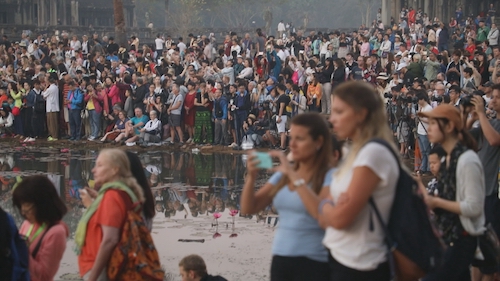
- 52'
- Authors : Bertrand Bolzinger, Charles Comiti
- 24-02-2019
- Master : 2836
-
Share!
CAMBODIA: THE GREAT TOURIST INVASION | M6 | Enquête Exclusive
The thousand-year-old temples of Angkor, the turquoise waters of Sihanoukville, the charm of the floating houses of Lake Tonie Sap… Cambodia’s beauty is a magnet for increasing numbers of tourists… more than doubling over 5 years. And the trend has been rising continuously for the last 15 years… A record in Asia. The problem is that such mass tourism is not only a boon, it’s also a poison…
Sihanoukville is changing fast. The Chinese have gone overboard for this tiny seaside resort offering the things they don’t have: silken sand, water at 280all year round and gambling that is forbidden in their home country. In a single year, the country has turned into a miniature Macao. It already has 88 casinos! Real estate prices are rocketing. Beach huts are snapped up by the Chinese. The sea front has become a gigantic construction lot. Hotel complexes of several thousand rooms are sprouting like mushrooms. And Cambodians no longer have the means to live in the middle of town… it’s thought that 90% of the population will be Chinese by 2020.
To avoid the crowds, a new type of tourism, extremely fashionable with young Westerners, has emerged: it’s called “voluntourism”. This consists of organized trips that are part tourism and part humanitarian or ecological. There’s no shortage of projects: save the coral reefs, protect the elephants or help build a school. The problem is that this system has become a business in itself, sometimes in total disconnect with real needs…
To avoid running aground on such reefs, some tourists prefer to venture alone and discover the country away from the beaten tracks… In particular, the illegal mines in the north-east of the country in Ratanakiri province. That is where they mine the famous blue zircon stone, typical of the region. But what the tourists don’t know is its human cost: dozens of children, whose tiny bodies slip more easily along the galleries of the mines than those of adults, extract buckets of earth, hour after hour, seeking a stone. They have no schooling. And they risk their lives. All for a souvenir gem that will cost more than a hundred times what they are paid…
